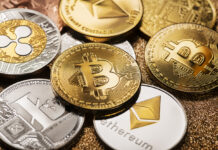Markets
The Fed yesterday as expected raised its policy rate by 50 bps, bringing the target range to 0.75%-1.0%. More 50 bps hikes are likely in coming meetings. In a direct address to the American people, Chair Powell said the Fed will use its tools to resolve the hardship that high inflation is causing. With inflation too high and an extremely tight labour market it’s in everyone’s interest to return to stable prices and restore the balances between supply and demand, also in the labour market. In this respect, the Fed in June will start reducing its holdings of Treasury securities by $30 bln p/m and MBS holdings by $ 17.5 bln p/m, doubling those amounts to a combined $ 95 bln p/m in September.
The Fed Chair was confident on the resilience of the economy. The labour market is strong; consumers have excess savings and businesses are in good shape. So, the US economy should be able to cope with higher policy rates without falling into a recession. Neutral financial conditions might be met by a policy rate between 2% and 3% and the Fed won’t hesitate to go above that level if necessary.
Even as the Fed president reiterated a strong commitment to bring inflation back to target, the press conference had a ‘dovish lining’. Hikes of 75 bps are not considered. US yields initially hardly reacted to the Fed statement, but Powell rejecting the option of 50 bps + hikes triggered a short squeeze on US bond markets. In the end, the curve bull steepened with the 2-y declining 14 bps, the 5-y easing 10.9 bps while the 30-y gained 2.6 bps. The correction was mainly driven by a setback in the real yield (10-y -8.6 bps to 0.05%).
This ‘soft’ repositioning also triggered profit taking on the recent USD rally. DXY dropped to the 102.50 area. EUR/USD jumped from the 1.0540 area to close at 1.0622. USD/JPY dropped below the 130 handle (close 129.09). The Fed making no plans to move to 75 bps hikes and Powell’s positive assessment on the economy propelled US equities with gains ranging from 2.81% (Dow) to 3.19% (Nasdaq).Asian equities mostly trade in positive territory as China returns from holidays despite a poor China services PMI. The dollar regains a few ticks. Later today, the Bank of England (exp 1.0% from 0.75%), the Norges Bank (exp. unchanged) , the Czech National Bank (exp 5.5% from 5.0%) and the Central bank of Poland (expected 5.5% from 4.50%) decide on interest rates. The BoE can’t ignore higher inflation further eroding purchasing power. However, if Bailey and co keep their guarded tone on further action, the hike might not help sterling much.
US yields might enter a ST consolidation pattern near recent peak levels, but we don’t expect a protracted correction. Any USD setback might be modest too, especially against the euro. The ECB still has to clarify its anti-inflation commitment. In this respect, we keep a close eye on a speech of ECB chief economist Lane. A clear hawkish U-turn from Lane won’t pass unnoticed on European (interest rate and FX) markets, but we want to see it happen first before turning more positive on the euro. An EUR/USD rebound above the 1.0760 area would signal some easing of pressure on the euro.
News Headlines
The Brazilian central bank (BCB) raised its key Selic rate as expected by 100 bps, to 12.75%, the highest level since January 2017. The cumulative amount of tightening since early last year amounts 1075 bps. Inflation pressures intensified further due to supply problems related to the new corona-wave in China and the war in Ukraine. The repricing of monetary policy in advanced economies increases uncertainty for emerging markets as well. As Inflation risks prevail, the BCB aims to continue its tightening cycle next meeting but with a smaller (<100 bps) hike. Monetary policy is already in restrictive territory. Therefore, some cautiousness is necessary in future actions. The Brazilian real didn’t respond to the outcome with USD/BRL already back below 5 ahead of the verdict via the dollar correction.













